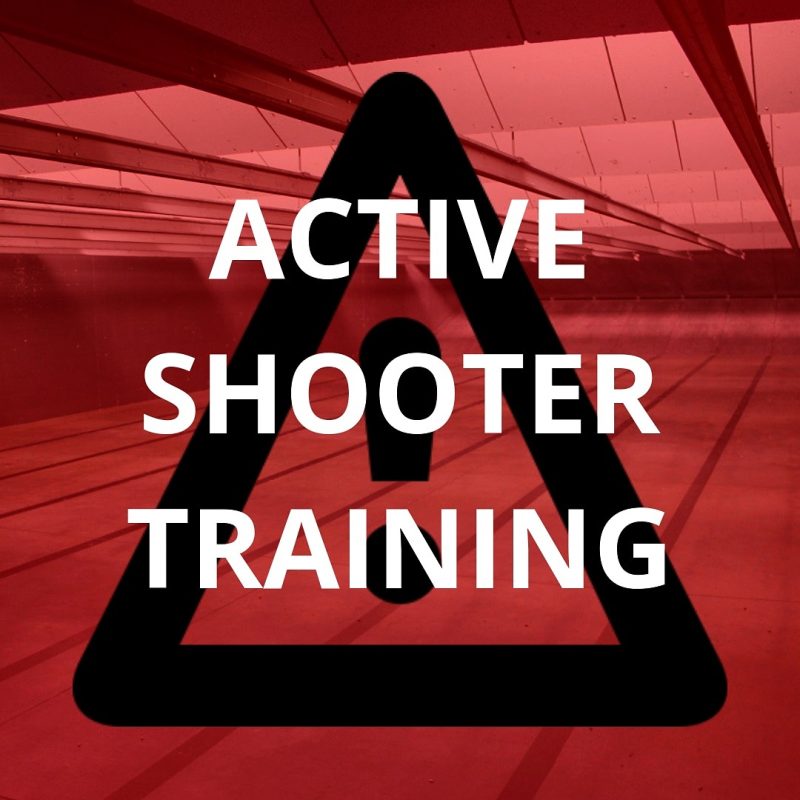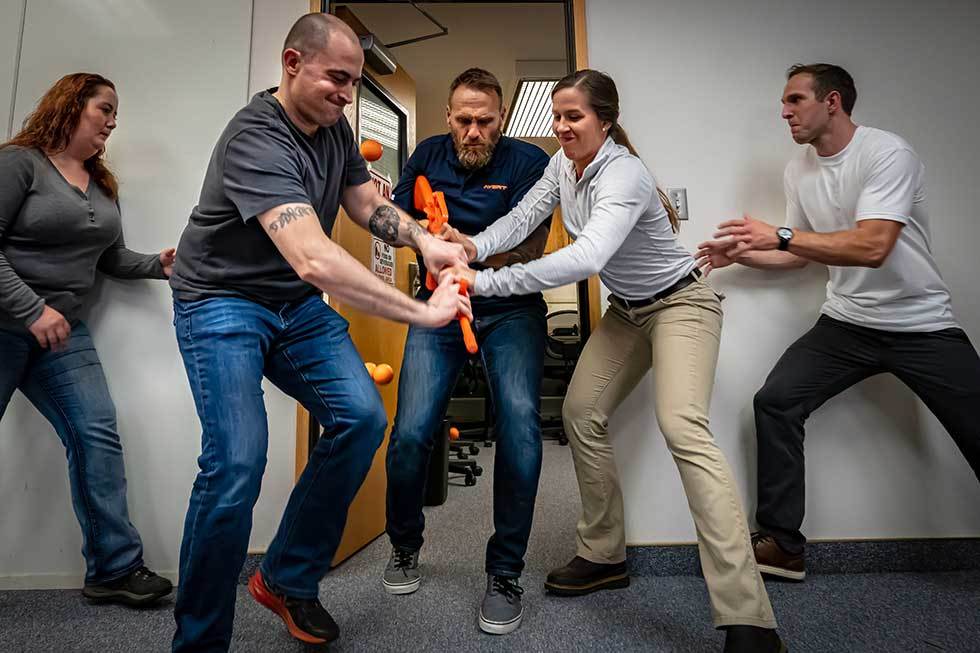How to Prepare Your Team with Active Shooter Training for Emergencies
How to Prepare Your Team with Active Shooter Training for Emergencies
Blog Article
Applying Energetic Shooter Training: Finest Practices for Creating a Safe and Prepared Community Environment
As areas face the unsettling fact of energetic shooter cases, the implementation of detailed training programs comes to be vital. What are the crucial components that can change a conventional training program right into a durable design for community strength?

Understanding the Requirement for Training
In a period noted by increasing incidents of violence in public rooms, comprehending the requirement for energetic shooter training has actually never ever been much more crucial. The frequency of mass capturings throughout numerous environmentsâEUR" such as colleges, offices, and buying centersâEUR" highlights the urgency for people and organizations to be gotten ready for such emergency situations. Active shooter situations can unfold quickly, leaving little time for individuals to react successfully. Detailed training campaigns can outfit individuals with the expertise and abilities to react emphatically.
Furthermore, the emotional influence of physical violence on individuals and neighborhoods can not be overstated. Training cultivates a sense of empowerment and readiness, allowing individuals to really feel more safe and secure in their environments. It likewise advertises a society of security, where awareness and caution come to be integral elements of day-to-day live. The advantages of energetic shooter training prolong past prompt response; they include improving communication procedures and boosting total precaution within companies.
Secret Parts of Effective Programs
Effective active shooter training programs incorporate numerous essential components that boost readiness and reaction capacities. Detailed curriculum advancement is crucial, making sure that training web content is appropriate, evidence-based, and tailored to the particular needs of the organization or area. This includes comprehending the dynamics of energetic shooter occurrences and the psychological influence on people involved.
Second, practical training situations ought to be used to simulate potential scenarios, enabling participants to exercise decision-making and reaction approaches in a controlled atmosphere. These drills facilitate muscle memory and build self-confidence amongst individuals.
Third, an emphasis on interaction methods is vital. Developing clear lines of interaction amongst police, emergency situation responders, and individuals makes certain worked with actions during an event. Regular updates and refresher courses assist keep interaction paths clear and reliable.
Fourth, recurring evaluation and responses mechanisms should be incorporated right into the training program - active shooter training. Analyzing the effectiveness of training through individual feedback and performance metrics permits continual enhancement
Finally, cultivating a culture of safety and security and readiness within the neighborhood urges watchfulness and proactive actions, ensuring that people are not just experienced yet additionally participated in preserving a safe environment.
Engaging Neighborhood Stakeholders

To successfully engage these stakeholders, it is important to connect the purposes and benefits of the training. Hosting informational sessions can help clarify the training's function, address issues, and detail the functions each stakeholder may play. Developing a stakeholder advisory board can facilitate recurring dialogue, permitting for diverse perspectives and understandings to be integrated into the training program.
Building relationships with neighborhood leaders and organizations is likewise essential. Their assistance can boost outreach efforts, boost engagement, and make certain that training is customized to the unique demands of the neighborhood. Additionally, stakeholders can help in sharing info and resources, strengthening the message of security and readiness.
Eventually, involving community stakeholders not only strengthens the training effort yet additionally grows a sense of possession among residents, resulting in an extra resilient and informed community with the ability of responding properly to potential hazards.
Educating Delivery Methods
Utilizing a variety of training distribution approaches is important to suit the varied knowing designs and needs of participants in energetic shooter training programs (active shooter training). Efficient training can take a number of kinds, including lectures, hands-on simulations, online components, and interactive workshops. Each approach serves an unique purpose and can enhance the general learning experience

Online modules offer flexibility and availability, making it possible for individuals to learn at their own rate. These can consist of videos, quizzes, and discussions to determine understanding. Interactive workshops motivate seminar and analytical, promoting teamwork and communication skills.
Including a blended strategy that integrates these techniques not just enhances the training experience yet also guarantees that individuals are better prepared to respond properly in case of an energetic shooter situation (active shooter training). By addressing different learning choices, organizations can develop a more enlightened and receptive area
Continuous Examination and Renovation
Regular assessment and enhancement of energetic shooter training programs are important to maintaining their significance and effectiveness. As hazards progress, so must the approaches and approaches used in training. Continual examination makes sure that training content shows the most up to date knowledge on active shooter cases, including lessons discovered from current occasions and adjusting for emerging fads.
To facilitate this process, organizations must develop responses systems that consist of individual evaluations, expert testimonials, and case debriefs. Collecting data on participant efficiency during drills and weblink workouts is important, as it highlights locations requiring enhancement and notifies future training sessions. Furthermore, involving with police and emergency responders can give useful insights into the practicality and applicability of training protocols.
Consistently set up testimonials of training materials and methods should be mandated, fostering an atmosphere of development and adaptability. Organizations has to also encourage a society of ongoing understanding, where team member feel empowered to recommend modifications based on their experiences. By committing to constant evaluation and renovation, companies not just improve the performance of their active shooter training programs yet additionally enhance their general commitment to safety and security and readiness within the community.
Verdict
In verdict, effective application of energetic shooter training demands an extensive method that focuses on community involvement and practical simulations. By establishing customized curricula, incorporating diverse training methods, and fostering collaboration among stakeholders, areas can boost readiness. Constant evaluation and comments systems are essential for adjusting programs to arising check out here risks, therefore reinforcing overall safety and security. Inevitably, a commitment to ongoing training and improvement cultivates a culture of vigilance and readiness, guaranteeing a more secure environment for all neighborhood participants.
Report this page